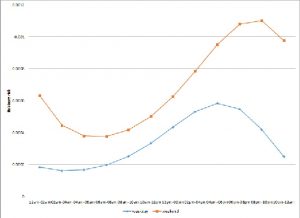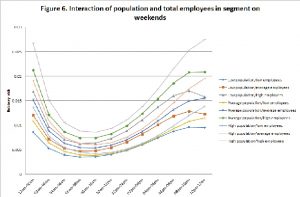Given that crime events exhibit both a spatial and a temporal pattern, this study explores whether certain social and physical environment characteristics have varying relationships with crime at different times of day. The study uses a flexible nonlinear parametric approach on a large sample of street segments (and surrounding spatial area) in Southern California. The study finds different temporal and spatial patterns for key measures. The presence of total employees in the surrounding area is associated with a reduced robbery risk during the daytime, but not at night. The risk of a robbery is elevated on a high retail segment on weekends during the daytime, and on high restaurant segments into the early evening on weekends. Furthermore, the presence of retail and restaurants in the surrounding area (evidence of shopping districts) was associated with elevated robbery risk in the afternoon and well into the evening.
You can access the article by Dr. John R. Hipp and Dr. Young-an Kim in Journal of Criminal Justice entitled, “Temporal and Spatial Dimensions of Robbery: Differences across Measures of the Physical and Social Environment”.
Get it here: https://www.sciencedirect.com/science/article/pii/S0047235218303775
Abstract:
Objectives: Given the evidence that crime events exhibit both a spatial and a temporal pattern, we explore whether certain social and physical environment characteristics have varying relationships with crime at different times of day.
Methods: We assess this temporal question using a flexible nonlinear parametric approach on a large sample of street segments (and surrounding spatial area) in Southern California.
Results: There are different temporal and spatial patterns for key measures. The presence of total employees in the surrounding area is associated with a reduced robbery risk during the daytime, but not at night. The risk of a robbery is elevated on a high retail segment on weekends during the daytime, and on high restaurant segments into the early evening on weekends. Furthermore, the presence of retail and restaurants in the surrounding area (evidence of shopping districts) was associated with elevated robbery risk in the afternoon and well into the evening.
Conclusion: These different temporal patterns indicate the possibility of different mechanisms in operation.

